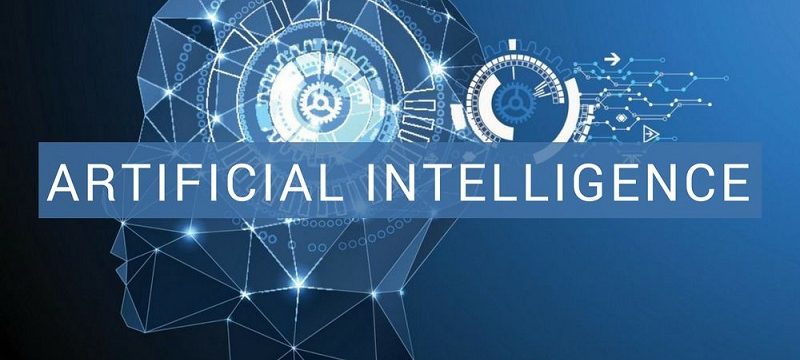How AI Can Analyse the Fraud Detection in Credit Card

Fraud detection has been a major issue for financial services and institutions. With the increase in global transactions, the chances of fraud have also increased. But artificial intelligence has an enormous potential to reduce the financial fraud. Artificial intelligence applications have a great potential to detect and prevent the fraud.
Payment Fraud is one of the ideal use cases for artificial intelligence and machine learning. It is now being used successfully for a long time for fraud detection. When the customers get any call, text email or in-app messages from the credit card issuer, asking them for the validation of transaction or informing them about the fraud on their credit card, they might not even realize that behind such an exceptional customer service, there are an excellent set of algorithms.
According to a recent report by McAfee, it is estimated that cybercrime currently costs the global economy nearly $600 billion which is 0.8% of the global gross domestic product. One of the most common and preventable types of cybercrime is credit card fraud which has increased in the past years due to growth in the online transactions. The rate at which financial loss can occur when credit card fraud takes place makes the fraud detection and prevention extremely important.
Because we have a large volume of customer data and transactional data, artificial intelligence can be effectively used for the detection of credit card behavior and usage patterns. By analyzing the irregularities in the pattern changes, artificial intelligence applications can detect and prevent the fraud.
Artificial intelligence in Fraud detection
Before delving deep into the topic, let us first discuss the artificial intelligence. Artificial intelligence is a buzzing and trending topic these days. From self-driving cars to virtual assistants, artificial intelligence, the applications of artificial intelligence have amazed us. But what is artificial intelligence? Artificial intelligence is the branch of computer science that helps in creating intelligent machines. These machines have the capability of reasoning, perception, problem solving and decision making. Artificial intelligence machines have the capability to learn over the time and they can learn from past experience.
Threats in Real Time Payments
With the rise in P2P and m-commerce, there is a large increase in the Real-Time Payment System. This growth has been tremendous and now, 18 countries are having a live RTRPS system. Real-time payment system not only replaced the traditional approach of payment but also have made the processes more convenient and faster. This has also helped in detecting the fraud quicker than ever. The time to detect and act on fraud has decreased to a great extent.
Card not Present Threats
As EMV can successfully mitigate the card present fraud, criminals have begun to shift their approach for more complex fraud schemes like card not present scenarios like account takeover. This is one of the costliest frauds that needs an average resolution of 16 dedicated hours and $300 out of the box expenses. The account takeover frauds are on the rise where fraudsters take information from the social media data and data purchased on the dark web to gain access to the banking information like credit card and debit card details.
Newer Fraud Prevention and Detection
Banking and financial industries are making the payments easier and safer than never before. Tokenization replaces payment card with unique data token or 3D secure biometric authentication instead of static password and transmission of rich data during transactions. What’s interesting to see is that while banks and financial institutions are using the latest technology for fraud prevention like artificial intelligence, machine learning, and other techniques, fraudsters are using them too. Also, there is always a clean fraud from stolen credit cards. So, there is a great need of a foolproof fraud prevention measure that can decrease the attacks through digital channels.
And here comes the role of artificial intelligence. Artificial intelligence as a data science service can autonomously learn, uncover the patterns and drive the hidden insights in the payment world. The fraud attacks are getting more and more sophisticated and financial industry is pacing up its innovation to cope up with these activities. Machine learning has two broad categories:
Supervised learning: Supervised learning contains labeled and input data. The main aim is to learn the algorithmic mapping functions from input variables to output variables so that the function can predict output correctly when new input is fed.
Unsupervised Learning: It comprises of unknown and unlabeled input data. The goal is to determine the hidden pattern in the data.
A traditional machine learning model that detects fraud is primarily a supervised machine learning algorithm. It has the ability to perform transactions with past knowledge and flags that can identify the nature of the fraud. The main problems with this model are:
Static in nature: The algorithm is good for identifying the frauds of known nature but it is not able to detect the new patterns.
Maintenance Cost: The algorithm needs larger labeling of datasets. This is not usually easy and labeling through past transaction is difficult.
Slower Response Time: In the real scenario, a credit card holder raises an alarm of fraudulent activity when the user statement is generated. Investigation and flagging it as a fraud activity takes another 4- weeks of time. Moreover, if the model needs to be labeled, the impact can go manifolds in this period.
How to choose the right artificial intelligence model?
As data is growing exponentially, the labeling of transactions generates the insights based on the data. The models can generate false alarm many times if it is not trained properly. So, the algorithm must be intelligent enough to learn from thousands of features extracted from financial and non-financial information in the customer profile, social data etc to detect any anomaly. In the AI modeling, the solution can be found in an unsupervised deep learning neural network that does not require labeled training mechanism. The improved mechanism not only avoids the cost of labeling the datasets, it can also learn from the real-time data and unknown deviations.
Conclusion:
The banking and financial sector is finding the newer and easier ways for payments. The new payment methods will ensure complete safety and faster payments. The payment from credit cards will become more secure and robust by using artificial intelligence and machine learning algorithms. Also, the fraud detection and prevention will become easier than before.
Subscribe & Get E-Mail Updates Delivered
Our informative Design related articles featuring the latest Resources for Web Designers & the Web get delivered via email dialy. Thousands of readers have signed up already. Why don't you subscribe as well, and get articles delivered to your inbox?






Leave a Reply